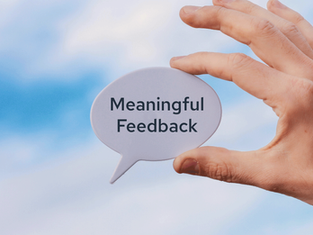top of page
The latest blogs from
Guroo's learning specialists.
Advice, ideas and discussion from our team of learning experts.
Search


Content Repurposing for Course Creators: Multiple Formats, Maximum Impact
Transform one piece of training content into workshops, online courses, micro-learning modules, and masterclasses. Learn strategic content repurposing to maximise your investment and reach more learners.
5 min read


Test, Learn, Improve: A Practical Guide to A/B Testing Your Short Courses
Learn how to use A/B testing to improve your training programs with data-driven decisions. Discover what to test, how to measure results, and common mistakes to avoid in educational A/B testing.
4 min read


Beyond Praise: Meaningful Feedback That Drives Learning Outcomes
Learn how to design feedback that drives real learning improvement, not just participant satisfaction. Discover timing, techniques, and systems that create lasting behaviour change in training programs.
6 min read


Why Your Face-to-Face Learning Needs a Digital Companion
Enhance your face-to-face training with digital components. Discover how blended learning maximises engagement, improves retention, and creates lasting behaviour change in professional development programs.
3 min read


Using Social Proof to Sell Short Courses
Learn how to systematically collect and leverage testimonials, case studies, and social proof to build trust with potential participants. Turn your successful learners into your most powerful marketing assets.
6 min read


B2B vs B2C Training: Which Approach Should You Choose for Your Business?
Should you focus on individual learners or corporate clients? Discover the key differences between B2B and B2C training approaches, including revenue models, operational requirements, and growth potential to choose the right strategy for your business.
5 min read


From Individual Sales to B2B Contracts: Marketing Short Courses
Discover why corporate clients offer better revenue potential than individual course sales. Learn B2B marketing strategies to position your training programs for business buyers and build profitable corporate relationships.
5 min read


Designing Short Courses for People Who Don't Have Enough Time
Learn how to design training programs that work with busy professionals' time constraints. Discover flexible pacing, chunked content, and just-in-time learning strategies that improve completion and application rates.
5 min read


Customising Your Program for a Corporate Audience
Learn how to adapt open short courses for corporate clients. Discover key differences in objectives, language, structure, and assessment that make corporate programs successful.
5 min read
bottom of page
